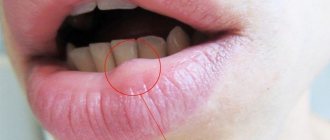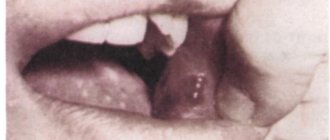Treatment methods for abscess
Diagnosis of an abscess and prescription of eyelid therapy is carried out by an ophthalmologist after examining the patient, collecting anamnesis and complaints.
Need advice from an experienced doctor?
Get a doctor's consultation online. Ask your question right now.
Ask a free question
Additional diagnostic methods - x-rays, laboratory tests - will be required to identify the causative agent of the disease. The diagnosis for more severe symptoms is called cellulitis.
In addition to drug treatment, surgical intervention for an abscess is often required.
Surgical
The need for surgical treatment of the eyelid is caused by the localization of the focus of purulent-inflammatory lesions. Urgent prevention of the spread of infection through surgical intervention is necessary due to the proximity of the abscess to the eyes and frontal sinuses. Their infection can have more serious consequences.
The ophthalmologist determines the degree of neglect of the pathology. If it is superficial, it can be opened on an outpatient basis. The consequences are minimal. If the disease is advanced and severe, the patient will be sent to hospital treatment with surgical intervention.
In case of subperiosteal abscess, they resort to subperiosteal orbitotomy, in case of retrobulbar abscess, they resort to opening the periosteum.
For eyelid surgery, local anesthesia is used.
Medication
Treatment of an abscess on the eyelid with medication involves the inclusion of a procedure for sanitation of a purulent-inflammatory focus formed in the area of a mobile skin fold.
The doctor prescribes drugs related to sulfonamides and other antibiotics for systemic use.
Treatment for an abscess on the eyelid includes:
- antibacterial drugs of the penicillin series intravenously or intramuscularly, injections are given four times a day;
- Tetracycline tablets, the dosage is prescribed by a specialist, should be taken orally three times a day;
- Sulfadimezine tablets up to 8 times during the day;
- analgesics, antihistamines.
The patient will require maintenance therapy, treatment of the nasal mucous membrane with drugs with a vasoconstrictor effect. You will need to lubricate or irrigate the nasal passages with a solution of adrenaline hydrochloride at a concentration of 0.1% to relieve swelling of the eyelid and inflammation.
For an abscess on the eye, it is recommended to take vitamin complexes and undergo autohemotherapy.
The duration of the course of conservative treatment is determined by the doctor.
When the abscess is opened, you need to visit a specialist for antiseptic treatment of the damaged area of skin on the eyelid. An ointment may be prescribed to help heal a wound after an abscess.
Folk remedies
An abscess on the eyelid cannot be treated independently using folk recipes. Improper home therapy can provoke a premature breakthrough of the abscess, leading to infection penetration into the deep layers of tissue.
Alternative treatment can cause irreparable harm to health and lead to serious complications. Compresses can be applied to the pathological area only with the permission of the doctor, following the rules of manipulation. This may reduce symptoms.
Treating an abscess with herbs alone is ineffective. It can be used as an auxiliary method, including in complex eyelid therapy.
Causes of occurrence in adults, children and characteristic symptoms
Children and adults, regardless of gender, are susceptible to pathology. More often, an abscess is diagnosed in a child with weak immunity. Purulent inflammation of the eyelid is caused by the active proliferation of pathogenic bacteria - staphylococci, streptococci.
Factors that provoke inflammation near the eyes:
- blood-sucking insect bites;
- squeezing out acne and poor eyelid skin care;
- a foreign object caught in the eye;
- purulent inflammation affecting the sinuses or located in the oral cavity;
- improper treatment of acne, styes, boils;
- meibomite.
Routes of infection that result in eyelid abscess:
- penetration of pathogenic microorganisms through damaged skin folds in the eye area - wounds, scratches, cuts;
- spread of infection, the focus of which is in the orbital area - barley, squeezed pimple near the organ of vision;
- infection transferred through the bloodstream from its other foci - otitis, sinusitis, stomatitis, tonsillitis.
Often, the appearance of inflammation on the eyelids is caused by improper treatment of purulent formations near the eyes. Independent removal of blackheads and other formations with this localization carries the risk of consequences.
The symptoms of the pathology gradually worsen. The accumulation of purulent contents of the cavity leads to greater severity of symptoms.
The development of symptoms is not rapid, as with barley. Signs of a purulent abscess are steadily increasing, acquiring a pronounced character. The pathology causes the patient a lot of discomfort.
Abscess symptoms:
- The tissues in the orbital area thicken and become denser.
- The eye begins to swell due to swelling of the eyelid. Redness of the skin of the mobile fold. When you press your fingers on the problem area, the painful pulsation intensifies, indicating a purulent-inflammatory process. Feeling hot is evidence of a local increase in temperature.
- Vision deteriorates.
- With an abscess that has formed on the upper mobile fold of the skin, it is difficult to close the eye. The eyelid may become very swollen, making it difficult for the eyeball to close.
- With a large area of damage, symptoms of general intoxication occur in the form of fever, weakness, and elevated temperature (the indicator can reach +39.8 ⁰C).
- Feeling worse, headache.
- The appearance of a white or yellowish speck at the site of compaction is evidence of purulent contents. After a few days, the abscess will open and the pus will come out.
The release of contents from the cavity formed on the eyelid helps to alleviate the condition and eliminate unpleasant symptoms. If the pus is not completely cleared, the symptoms return and the inflammation becomes chronic. Fistula formation is observed.
Opening the tumor on your own is prohibited - there is a risk of spreading the infection.
An abscess, regardless of type, requires urgent treatment.
Localization and code according to ICD 10
Eyelid abscess (ICD 10 code H 00.0) is what ophthalmologists call a limited inflammatory process located near the organ of vision. Inflammation leads to the formation of a cavity through purulent melting of tissue.
Based on location, abscesses of the upper and lower eyelids are distinguished. More common is the formation of a cavity with purulent contents on the upper mobile fold of skin covering the eye. The pathology can be localized at the eyelash growth line.
An abscess can be:
- External. A common type of pathology in the form of an abscess formed on the edge of the orbit. Ripening is observed from the outside. Infection of nearby tissue leads to development.
- Internal. Formation of an abscess on the side facing the eyeball. The cause is an infection of the meibomian glands located near the base of the eyelashes.
An abscess on the inside of the lower eyelid is more often diagnosed than an abscess hidden on the upper skin fold.








